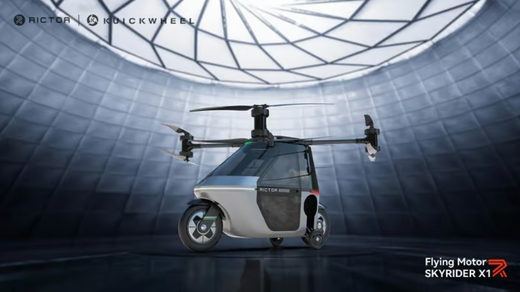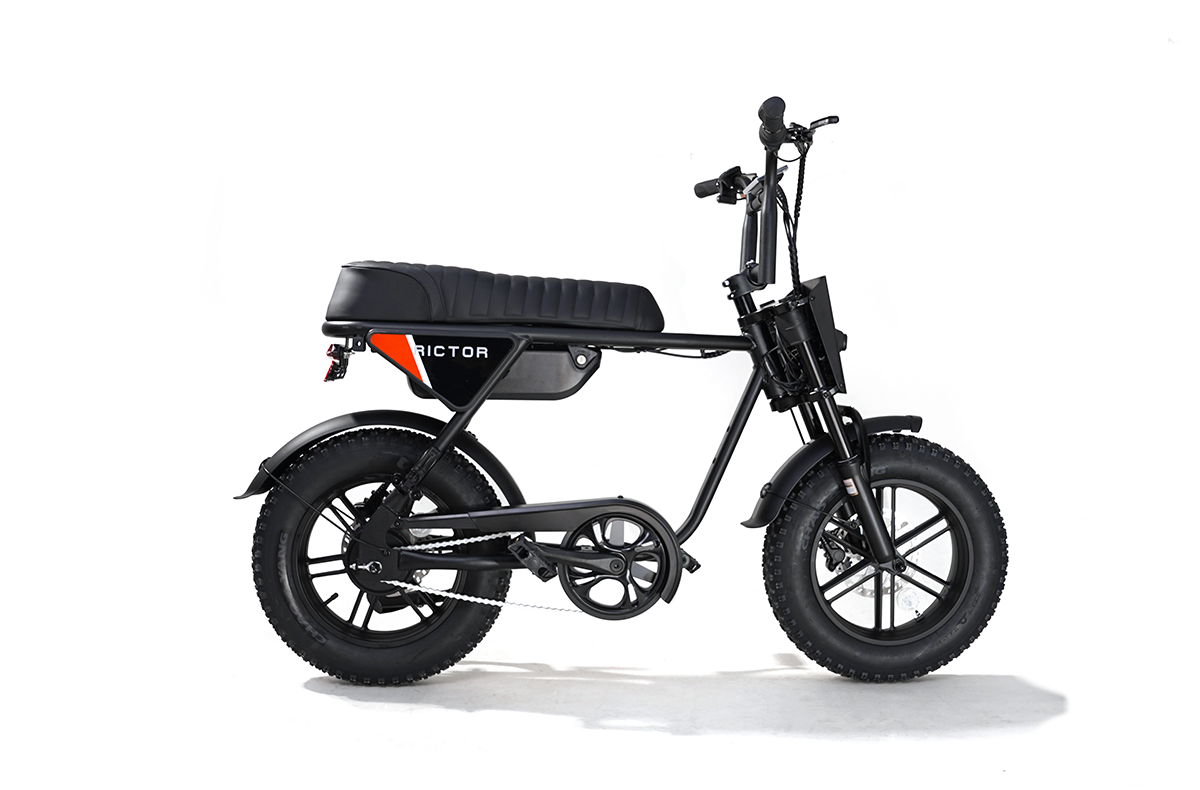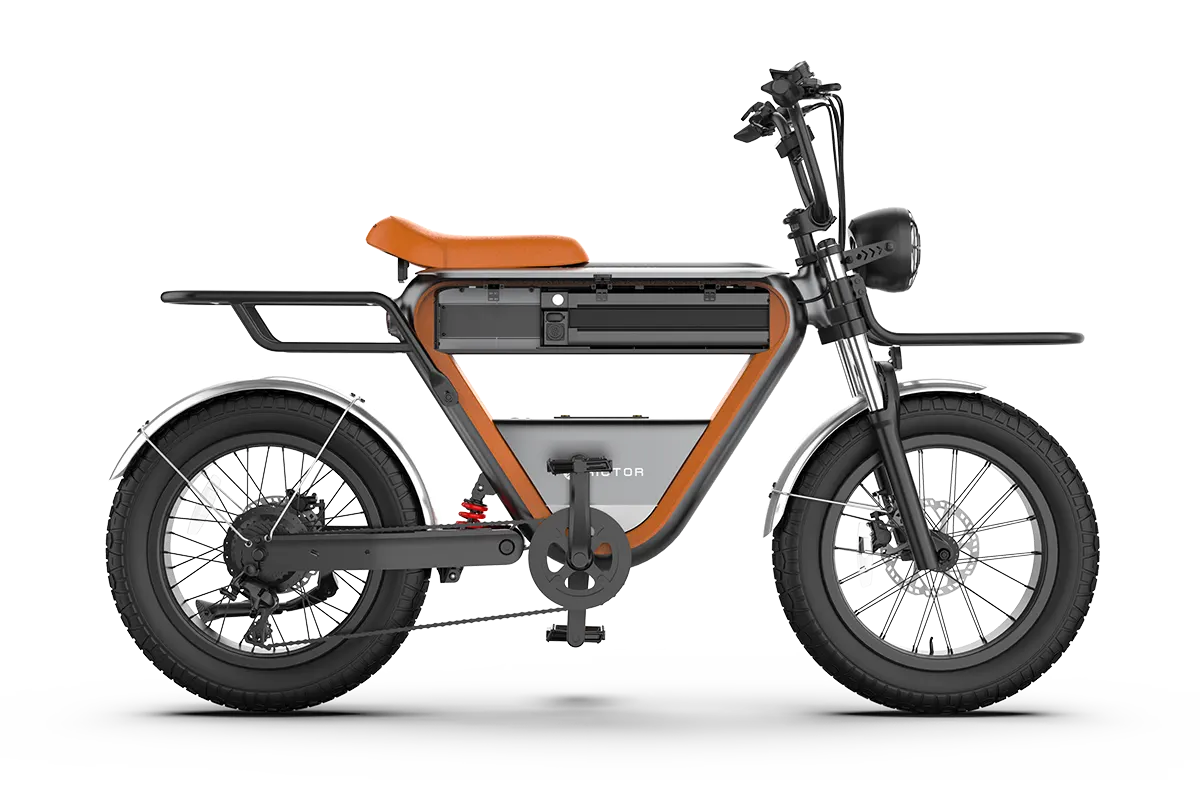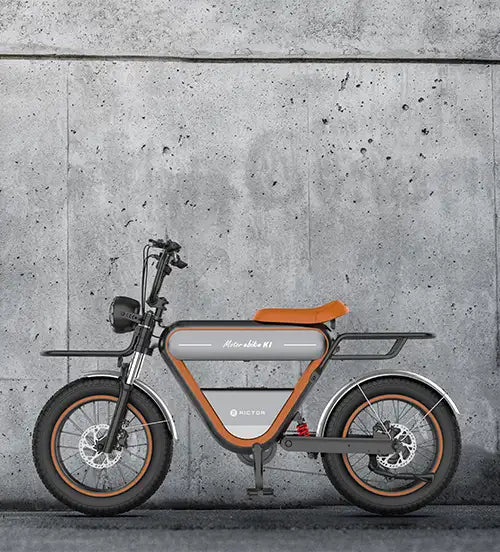
eVTOL Batteries: What’s Next in the Race for Better Flight?
Electric vertical takeoff and landing (eVTOL) vehicles are often seen as the future of urban transportation.
According to Interesting Engineering, RICTOR has launched the world’s first sci-fi electric motorcycle skyrider X1, an eVTOL product that can fly for 40 minutes at 62 mph and land vertically. This groundbreaking vehicle combines the thrill of motorcycles with the practicality of vertical flight.
While this sounds exciting, there’s one huge factor that will determine whether this dream becomes reality: batteries.
Without advanced, reliable batteries, these flying machines can’t reach their full potential.
What makes eVTOL batteries so important, and why they could be the key to revolutionizing transportation.
What Kinds of Batteries Do eVTOLs Use
Most eVTOLs use lithium-ion batteries, the same kind found in smartphones, laptops, and electric cars. These batteries are a great fit because they pack a lot of energy into a relatively small and light package.
But here’s the thing: even though lithium-ion batteries are widely used, they still have some limits, especially when it comes to the range and weight of eVTOLs.
Lithium-ion batteries are pretty efficient, but they’re not perfect. Energy density, or how much energy the battery can store for its weight, is a big issue. If you want your eVTOL to fly long distances, you need a battery that can store more energy without getting too heavy. Lithium-ion batteries just don’t have enough energy density to keep up with the high power demands of eVTOLs, especially for longer flights.
Solid State Batteries
There’s hope, though. Solid state batteries are one of the most promising technologies for eVTOLs. These batteries are still in development, but they could change everything.
Why? They offer higher energy density compared to lithium-ion batteries. This means they could store more energy in a lighter package, which is exactly what eVTOLs need to fly longer and carry more weight.
But solid state batteries aren’t just lighter and more powerful; they’re also safer. They are less likely to overheat or catch fire compared to lithium-ion batteries, which is a huge safety advantage, especially when you're talking about something that’s flying over people's heads!
Energy Density: Why It’s a Big Deal
Energy density is the amount of energy a battery can store per unit of weight. If a battery has high energy density, it can store a lot of energy without being too heavy.
This is super important for eVTOLs because the more weight they carry, the harder it is for them to fly efficiently. In simple terms, the heavier the battery, the less room there is for passengers, cargo, or even the vehicle’s structure.
Most eVTOLs can only fly for about 30 minutes to an hour on a full charge, which is fine for short trips or city commuting. But if we want eVTOLs to be viable for longer flights, we need batteries with higher energy density.
That’s why engineers and researchers are focused on improving lithium-ion batteries and exploring new technologies like solid state and lithium-sulfur batteries. These new batteries could give eVTOLs the ability to fly further, faster, and more efficiently.
Battery Weight
The weight of the battery is another huge challenge. Now, imagine how much weight a whole fleet of eVTOL batteries needs to support. It adds up quickly, and the more weight you have, the more power you need to lift it.
So, there’s a constant balancing act between energy storage and weight. You need enough energy to power the flight, but not so much weight that it makes flying difficult.
Engineers are constantly working to make batteries lighter without sacrificing their energy capacity.
This is where battery pack design comes into play. Some manufacturers are using advanced designs and materials to make their battery packs more efficient and less heavy, while still providing enough power for a smooth, safe flight.
Charging and Battery Life
Charging times for eVTOL batteries are a bottleneck. While electric cars may take hours to charge, eVTOLs need to be ready for takeoff much faster—ideally within minutes. The quicker the charge time, the better the turnaround between flights, making the eVTOL system more efficient and reliable.
But fast charging brings its own set of challenges. Charging a battery quickly generates heat, and heat can damage the battery. Researchers are working on ways to charge eVTOL batteries quickly without causing too much stress or reducing battery lifespan.
Some companies are even exploring swappable batteries—where the batteries can be replaced rather than recharged—so that an eVTOL can be ready to go again in minutes.
For eVTOLs, you don’t want a battery that degrades too quickly. Most lithium-ion batteries last for a few hundred to a thousand charge cycles, but that’s not always enough for daily use in high demand environments. The longer the battery lasts, the better it is for both the cost and the environment.
The Road Ahead for eVTOL Batteries
We’re still in the early stages of eVTOL technology, but the potential is enormous.
With improvements in battery energy density, charging speed, and weight reduction, eVTOLs could revolutionize urban mobility. The key to making this happen is better batteries.
As solid state and next-gen batteries come closer to reality, we could see eVTOLs that can fly longer, carry more, and charge faster.
The future of flying cars may depend less on the machines themselves and more on the power behind them. So, while the dream of soaring through the skies like in a sci-fi movie is exciting, it’s really the advancements in battery technology that will determine how soon it becomes a reality.
FAQs
What type of batteries are used in eVTOLs?
Most eVTOLs currently use lithium-ion batteries, which are lightweight and efficient. However, there is a lot of research into solid-state batteries and other alternatives that could offer even better performance in the future.
Are there any other types of batteries being explored for eVTOLs?
Yes, solid-state batteries are a promising alternative. They can potentially offer higher energy density and better safety features, as they are less likely to overheat or catch fire. Research is also looking into lithium-sulfur and lithium-air batteries, which could deliver even more energy.
Will eVTOLs ever be able to fly long distances?
At the moment, most eVTOLs are designed for short to medium distances due to the limits of battery energy density. However, as battery technology improves, it’s expected that eVTOLs will be able to fly longer distances. Some companies are already working on improving battery energy storage and efficiency.




